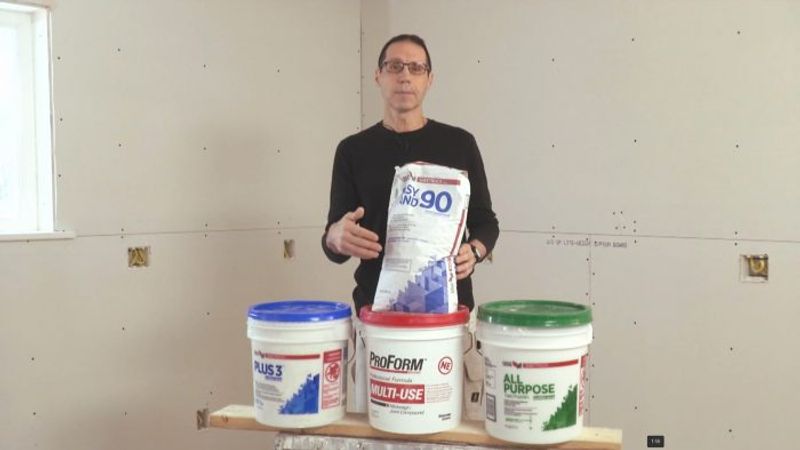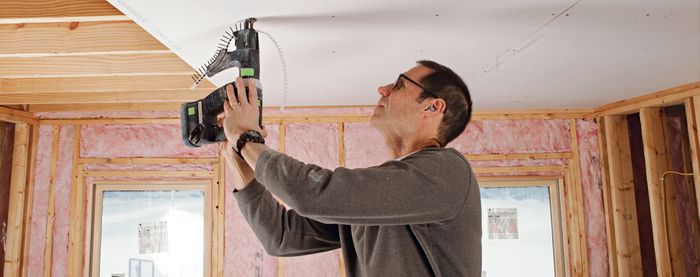4 Options for Drywall Joint-Compound
Myron introduces the most common types of drywall mud, and he explains where he uses them and why, depending on the needs of the specific job.

There are a few options when it comes to joint compound and I’d like to explain why I would choose one type over another.
What I have here are three different types of a drying-type compound. They come premixed in a bucket and all you have to do is stir them up and they’re ready to use.
1. Lightweight Compound
This is relatively new to the market and is a great product for your fill and finish coats. It’s not really the best product for embedding your tape. The lightweight is what I use for my finish coats.
2. Heavyweight Compound
This is like your traditional compound that was first on the market and is best for embedding tape. It’s a harder compound when it dries, so it’s more difficult to sand. The heavyweight compound is what I use to embed my tape on a typical job.
3. Midweight Compound
This is kind of a mix of lightweight and heavyweight compound. This is what a lot of people use so they don’t have to switch from one type to another during the process. The midweight has become quite popular, but for myself, I prefer embedding my tape in the heavyweight and to do all my finished coats with a lightweight compound.
4. Setting Compound
Those are your premix compounds, but another type of joint compound that is quite common is setting compound. This comes in dry form and you have to mix it with water in order to make it the same consistency as a premixed compound. What is unusual about a setting compound is it sets up chemically, similar to how concrete cures.
So here I have a 90, which means in about 90 minutes, it’s going to be unusable. After it’s applied, it’s going to be set up and can actually be coated again in 90 minutes. I use the setting compound when I’m in more of a hurry. Let’s say I’m only taping one small room today, and I would like to get more than one coat on it. So instead of having to wait for these other compounds to air-dry, all I have to do is wait for the setting compound to set up chemically and I can apply my next coat, let that even-dry, and then apply the finish coat all in one day. It’s also great if your conditions are not ideal—for example if it’s really humid or the temperature is a little bit too low. Setting compound works better in those situations compared to the drying-type compounds.
RELATED LINKS:

